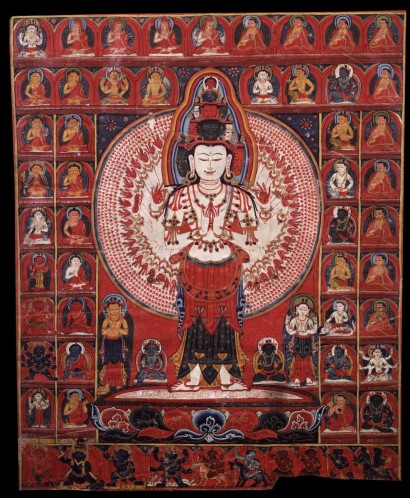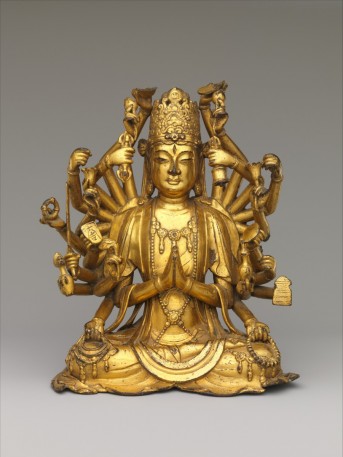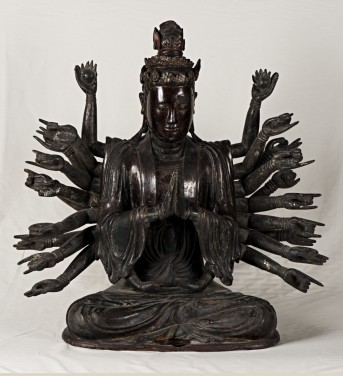Tibet, 14th–15th century; ground mineral pigment on cotton; 29 1⁄4 x 25 1⁄4 x 1 1⁄4 in.; The Rubin Museum of Art, New York, C2006.66.190.
According to legend, Avalokiteshvara vowed to save all beings from suffering, but his head exploded in a moment of discouragement. Amitabha then reformed the shattered pieces into Avalokiteshvara’s ten heads, topped by an eleventh representing his own. The bodhisattva’s thousand arms symbolize the innumerable means he uses to enlighten others. Two hands are held in frontal anjali mudra. The other hands hold prayer beads, dharma wheel, lotus, golden bottle, and bow and arrow. Additional arms form a corona behind Avalokiteshvara, with an eye in the center of each palm to aid him in searching out and healing all suffering. CZ






